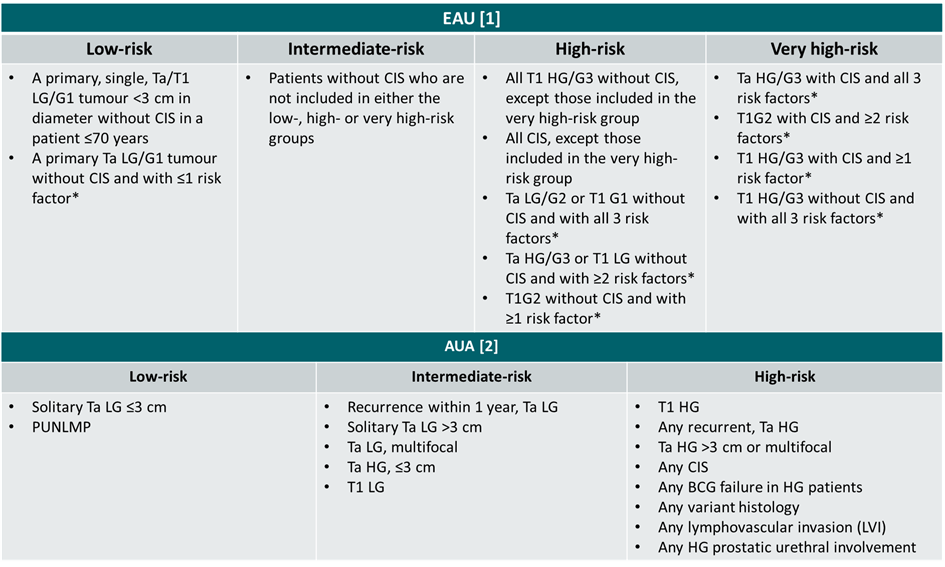Bladder cancer
Follow-up surveillance regimes for low-/intermediate-risk NMIBC
Educational Objective: Gain insight into individual follow-up surveillance regimes in patients with low- and intermediate-risk non-muscle-invasive bladder cancer (NMIBC).
Specialty: Urology
Target Audience: CME (basic, intermediate), Residents (senior)
Latest update: July 2023
Background:
- Patients with NMIBC need surveillance following therapy due to the risk of recurrence and progression
- Surveillance protocols should be tailored to the risk of recurrence and progression
- The EAU and AUA guidelines stratify patients with NMIBC into risk groups based on their probability of progression to muscle-invasive disease
NMIBC risk stratification according to the EAU and AUA guidelines

The World Health Organization (WHO) 2002/2022 classification system (PUNLMP vs LG vs HG) is currently supported by the WHO for clinical application. Nevertheless, the WHO 1973 classification system (G1 vs G2 vs G3) is still being used [1].
Clinical risk factors: age >70; multiple papillary tumours, tumour diameter ≥3 cm
G: grade; HG: high-grade; LG: low-grade; PUNLMP: papillary urothelial neoplasm of low malignant potential
- Gontero P, Compérat E, Dominguez Escrig JL et al. European Association of Urology (EAU) guidelines on non-muscle-invasive bladder cancer (TaT1 and CIS). Update March 2023. Available at: https://uroweb.org/guideline/non-muscle-invasive-bladder-cancer/
- Chang SS, Boorjian SA, Chou R, et al. Diagnosis and treatment of non-muscle invasive bladder cancer: AUA/SUO guideline. Update 2020. Available at: https://www.auanet.org/guidelines-and-quality/guidelines/bladder-cancer-non-muscle-invasive-guideline
